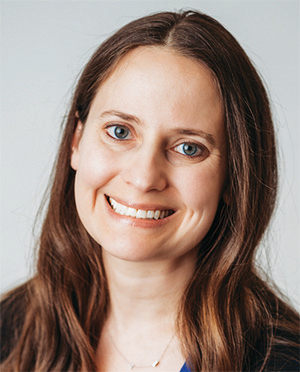Sheryl Sachs on breaking down barriers

By Tracy Orzel
Updated 8:35 AM CDT, Wed October 16, 2024
 BALTIMORE – From shaping legislation to mentoring future leaders, 2024 O&P Woman of the Year Sheryl Sachs is transforming the field of orthotics and prosthetics. As a certified prosthetist orthotist (CPO) at Maryland-based Dankmeyer, Sachs, MSPO, channels her expertise and fierce dedication into ensuring equal care and innovative solutions for patients. HME News recently spoke with Sachs about her mission to break down barriers, not only for her patients but also for other women.
BALTIMORE – From shaping legislation to mentoring future leaders, 2024 O&P Woman of the Year Sheryl Sachs is transforming the field of orthotics and prosthetics. As a certified prosthetist orthotist (CPO) at Maryland-based Dankmeyer, Sachs, MSPO, channels her expertise and fierce dedication into ensuring equal care and innovative solutions for patients. HME News recently spoke with Sachs about her mission to break down barriers, not only for her patients but also for other women.
HME News: Talk about your work with the "So EveryBODY Can Move" initiative.
Sheryl Sachs: It’s a grassroots initiative where individuals across the country are introducing legislation at the state level that would require insurance to provide coverage for activity-specific prostheses and orthoses. A lot of states don't have insurance fairness yet, so insurance is basically saying it's not medically necessary for you to be physically active just like your peers, and that's not right. I took on the role as the lead advocate for Maryland for the “So EveryBODY Can Move” initiative and built a coalition of some really wonderful patient advocates. Ultimately, our legislation passed, making us the sixth state to do so. Starting January 2025, commercial insurance and state Medicaid in Maryland will have to provide coverage for physical activity prostheses when deemed medically necessary by the prescribing entity.
HME: How do you see technology changing patient care?
Sachs: During the pandemic, we started doing a lot of telehealth where we were able to interact with patients and care providers. I think that opened up a lot of doors for patients who don't have access to care as easily as others. Also, we're scanning patients more than hand casting, so not only is that process faster, it gives us the ability to track things that we couldn't necessarily track before. For example, if the patient is an amputee, not only are we taking measurements, but we also have a physical model of their limb that we can compare to a previous model because of scanning technology.
HME: What are the obstacles to implementing new technology?
Sachs: Insurance coverage is often the biggest obstacle. Even if a technology exists, if insurance isn’t going to pay for it, we can’t realistically provide it to our patients. Also, technology is only as good as its user. If I don’t know how to use the scanner for a new prosthetic socket, I’m not going to create a good model of their limb; therefore, what I fabricate or what my technician fabricates isn’t going to work.
HME: What’s your vision for the field?
Sachs: We’re seeing more women in leadership positions. It's kind of funny because I never pictured myself as being one of those individuals. I think the number of women in the field, and evolving as leaders in the field, is changing. This field isn't what it was 40, 50, even 30 years ago and it’s important to support young women entering it for us to contribute not only within the field of O&P, but the larger health care environment, as well.
Comments